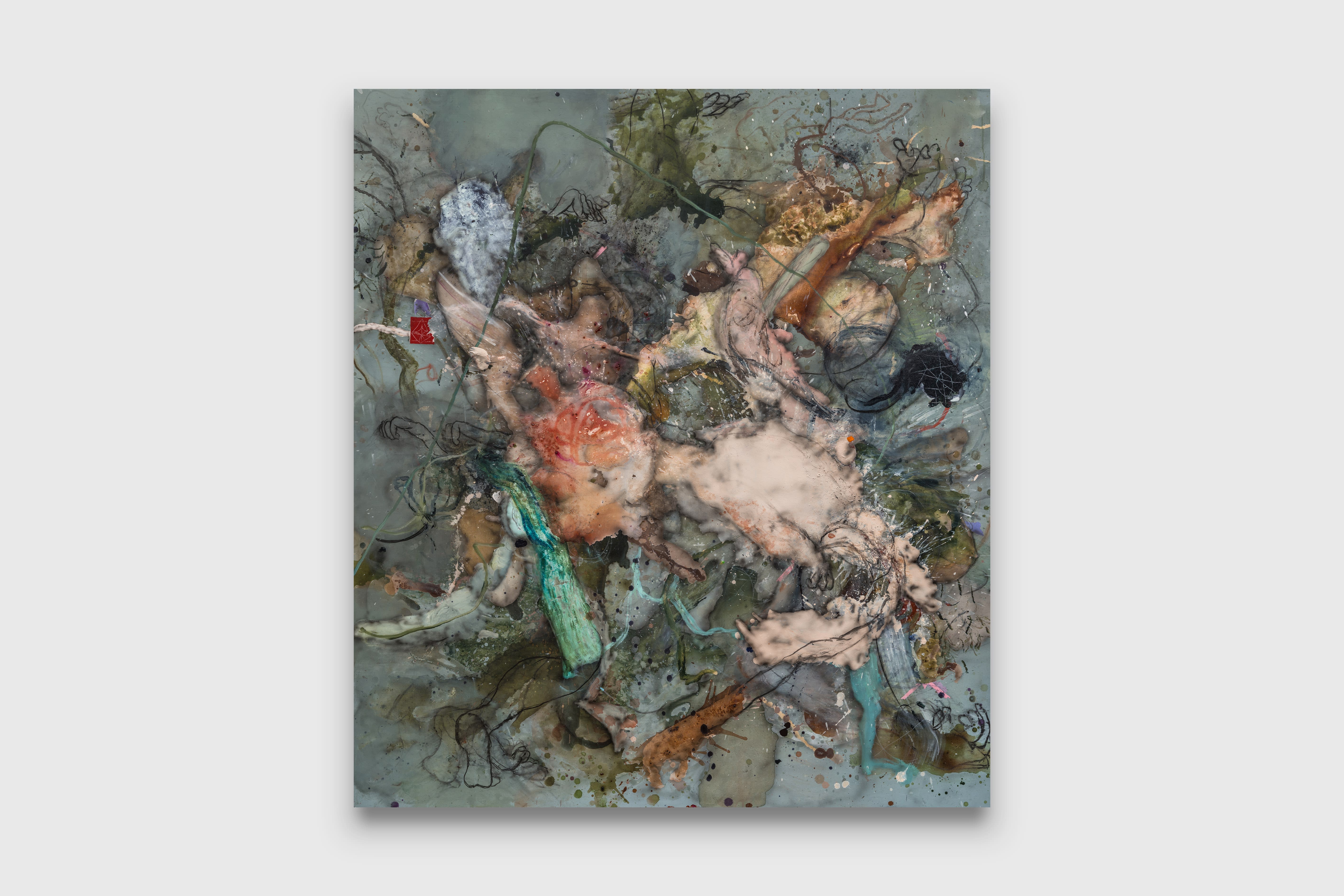
Nick Modrzewski’s fourth exhibition with COMA, Misbehaviour in the Age of Geometry, interrogates systems of control—whether social, legal, architectural, or psychological— and the ways they act upon human, animal, and hybrid bodies.
At their core, Modrzewski’s paintings are deeply physical, material manifestations. Working primarily on linen laid flat, he employs a lexicon of painterly gestures that oscillate between intention and accident: paint is spilled, thrown, dragged, rubbed back, and massaged into the surface. This fluid, almost alchemical process is then countered by deliberate acts of inscription—historical citations and specific visual cues are drawn, painted, or carved into the textured terrain. Bureaucratic stamps, heraldic crests, aerial maps of prisons, medieval geometric instruments, and fractured architectural plans emerge and recede, embedded within layers of accumulated mark-making. These forms, suggestive of rational systems—geometry, governance, discipline—are persistently undermined, their authority destabilized through erasure, distortion, and overpainting.
Historically, geometry has been a tool of governance, a mechanism for imposing order on bodies, spaces, and societies. From urban planning and legal frameworks to the idealized proportions of the human figure, its application has shaped how bodies are measured, controlled, and classified.
Leonardo da Vinci’s Vitruvian Man—a canonical representation of this impulse toward regulation—appears as a spectral presence in Errors and Miscalculations, 2025, where its rigid idealism is fractured, misaligned, and subsumed into a broader matrix of painterly intervention. Modrzewski’s approach to painting also cross-references multiple painterly precedents. Spillages and stains recall Helen Frankenthaler, while intertwining voluminous forms echo Caravaggio.
Modrzewski’s acknowledges the different legacies from which he draws, while simultaneously reconfiguring and reimagining their methods and strategies. Traces of social caricature, in the vein of Daumier or Hogarth, can be found in partially erased noses and chins that jut out from fields of overlapping forms and infantile smears. An oval shape, crudely scrawled in charcoal and loosely referencing a head, cuts through a thick crust of texture. This aggressively reduced figuration speaks to an artistic lineage that includes Jean Dubuffet and Paul McCarthy.
It is through this merger of citation and elemental mark-making that the paintings construct a compendium of distorted bodily parts, a warped library of corporeal forms that resists anatomical logic. Figures flicker in and out of recognition, captured in moments of frantic transformation as they jitter and almost dissolve into their environments. Modrzewski is negotiating the boundaries of the body; the stability of its representation, advocating for an open, shape-shifting metamorphosis. Ultimately, Misbehaviour in the Age of Geometry proposes misbehaviour not as an aberration but as an intrinsic condition of any system—an inextricable entanglement of structure and subversion.
In Modrzewski’s hands, painting becomes a site of negotiation, where authority and improvisation, precision and rupture, are held in precarious balance.

